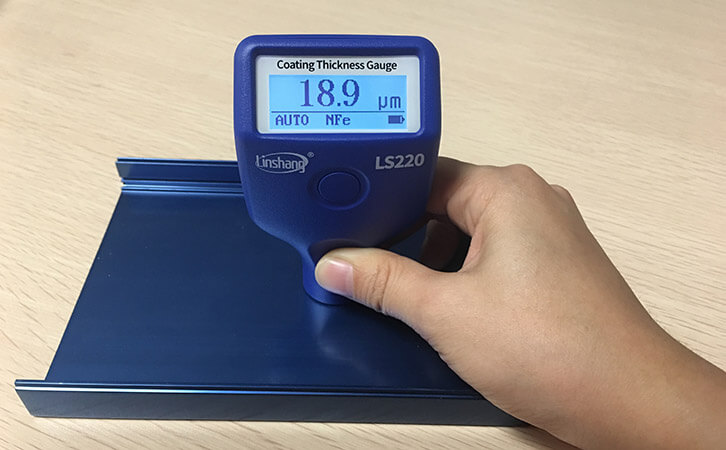Quality Control in Electroplating Industry with Paint Thickness Gauge
We all know that many metal materials are not only scarce in resources and expensive, but also directly exposed to oxygen and water, which will greatly reduce their useful life. So insiders will always plate a protective coating on the surface. The protective performance of this protective layer is inseparable from the coating thickness. In many electroplating processing industries, people use paint thickness gauges to grasp the coating thickness to ensure that the coating thickness is within the standard range and can exert the maximum protection effectiveness.
Let's talk about the quality control of the electroplating industry surface coating. In general, it is the coating quality protection.
| Marking | Base metal | Coating thickness (micron) | Conditions of use |
| EP.Cu15 | steel | 15 | Carburizing and carbonitriding |
| EP.Cu4 | steel | 4 | Meshing, brazing |
| EP.Cu2 | steel, cast iron | 2 | Brazing |
We list three relevant cases of the coating and the reference value of the coating thickness. If there is a large data deviation, it may cause some quality control problems.
1. The plating layer is too thick
Generally speaking, the electroplated coating thickness is better if it is within the allowable range. However, after the coating thickness exceeds the normal range, the most obvious problem is the waste of the coating material, which raises the cost invisibly. In addition, it will greatly affect the conductive properties of the material. Thicker coatings often lead to larger cover surfaces and overall volumes. Therefore, the electroplated coating can be thickness measured at any time by using the paint thickness gauge. It is controlled within the standard range.
2. The plating is too thin
The most fundamental problem caused by too thin plating is that the metal substrate cannot be completely covered. The external oxygen, water, acid and alkali penetrate into it, so that the plating coating cannot achieve the purpose of protecting the substrate. It is very unqualified. Therefore, most manufacturers will use paint thickness gauges to avoid coatings that do not meet standards and reduce the occurrence of bare metal substrates.
3. Uneven thickness of electroplated coating
The uneven thickness of the plating layer is also a problem that should be avoided in the plating industry. The uneven thickness of the plating layer is likely to affect the anti-corrosion performance. The excessively thick place is too rough and uneven. The excessively thin place is very poor in gloss. It looks dark and moldy and has poor protective performance. Therefore, no matter from the aspects of corrosion resistance, appearance, machining performance, etc., the factory and the purchaser hope to greatly improve the uniformity of the coating thickness. Correct and effective use of the paint thickness gauge can better help user achieve this purpose.
The above three points are the common quality control problems in the electroplating industry. The only and most effective solution is to use a paint thickness gauge for testing. Many people may not know much about paint thickness gauges. In fact, Linshang paint thickness gauge LS223 is very effective.
There are many different metal substrates in the electroplating industry and the required coating materials are not the same. This requires that the paint thickness gauge can have a large measurement range. This LS220H3 paint thickness gauge can be used for testing different types of electroplating materials. Nondestructive testing can be done in a short time.
- High precision coating thickness gauge for used car
- Automotive paint protection films coating thickness gauge
- Plating Thickness Measuring Instrument for Detecting Anti-corrosion Coating
- Linshang LS220, LS191, LS160A– Necessary for Car Cover Inspection
- Coating Thickness Gauge for Second Hand Vehicle
- Zero Adjustment Step of Coating Thickness Gauge
